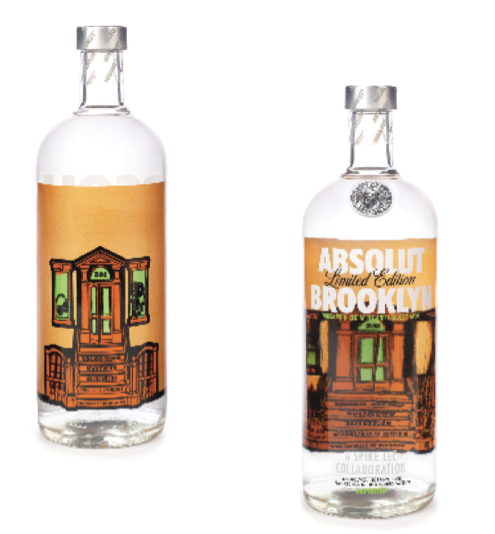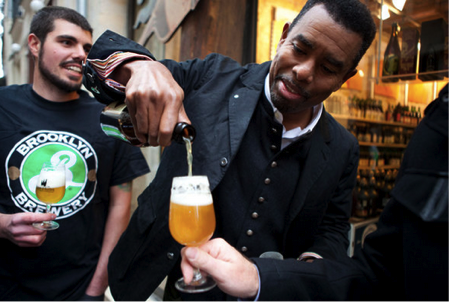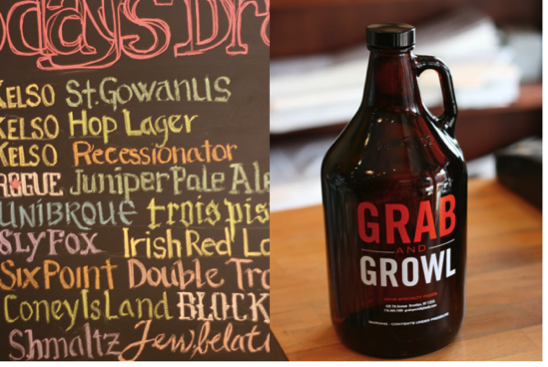During some workshop downtime on a recent trip to New York, I got chatting to one of my design buddies about the latest news and gossip. Inevitably our conversation drifted to what was cool in the city: where were people going, what were they doing? One of the interesting things he mentioned was the trend down in Brooklyn for drinking beer in half-pint glasses.
As you can imagine my ears pricked up; I was after all in ‘supersize me’ land! What happened to glugging on 16oz, I asked. Was Bloomberg going after beer now, following his call to ban the display of cigarettes in stores? The answer was a little less Big Brother, simply that these Brooklyn hipsters reckoned it looked cooler. Why be like everyone else when you can do something a little bit different? Which got me thinking around one of our most basic emotional conflicts—the desire to be different versus the desire to fit in. This eternal dilemma, played out in a bar by those wanting to stand out by sipping from an 8oz snifter, yet also wanting to be part of the Brooklynite in-crowd. It’s what Freud called ‘the narcissism of small differences’, the little, almost imperceptible things that set us apart.
Photo: Brooklyn Brewery’s small pints
Turf wars
Of course, bragging rights over where’s buzziest has to be earned. Brooklyn didn’t just become ‘a place to be’ overnight. It has preserved its individuality, while Manhattan has become a tad homogenous over the last twenty years—I mean, it even has Pret! Ironically, the man who created the I’ (heart) New York’ ident, Milton Glaser, also created the Brooklyn Brewery’s distinctive cursive B carried on the bottle label. This is a brand that gets that it’s part of the borough’s culture. That it’s important how they do things there. What they drink, what they eat, their rituals, their customs, and their art.
Photo: Brooklyn Pilsner
These are the things that distinguish Brooklyn, and its cultural set of values. They’re the ‘care abouts’ that guide its people’s behaviour, the moral compass for the borough. It’s how they express these values, though, that sets them apart. Knowing itself is what gives the Brooklyn brand the confidence to go out and share its story. It’s why this now iconic brewery is taking its MASH tour to the rest of the country. MASH because, one, it’s the first step in the brewing process; and two because it’s an adventurous mix of the best cultural happenings from the Brooklyn neighbourhood. A tour that includes everything from slow suppers with books and beer to night train clap and soul dance-offs! (See the MASH trailer on Vimeo).
Others like Brooklyn Grange have had the cultural belief to set up the world’s largest roof garden. Leading the way in urban farming, they utilize 40,000 available square feet of roof space to harvest upwards of 15,000 pounds of produce per season. This agricultural enterprise enables city people to have the same quality of produce as country folk and sets a trend for the rest of the urban world to follow.
Photo: Brooklyn Grange
Grab and growl
Brooklyn Brewery and Brooklyn Grange aren’t the only ones making the borough’s culture tangible for others to identify and experience. Not that it’s a place besotted with food and drink, but another custom Brooklynites have turned into an ‘it’ drinking accessory is the growler. Named supposedly after the ‘growling’ noise the beer makes inside these 64oz moonshine-like jugs as it’s carried, check out Bierkraft, Grab, and Brooklyn Beer & Soda. OK, they do look cool but their popularity goes beyond the aesthetic. People like the idea of getting beer that’s fresh. It appeals to their belief in quality products—people may be drinking less, so when they do they want something that’s good; that’s tasty not tasteless. Economics and sustainability play a part too for the people of Brooklyn. Growlers typically cost $8-$15 versus about $6 per pint. Plus, it’s a good way to promote recycling because you can bring back your jug for a refill.
Photo: Grab beer bottle
Badge of honour
Put all these elements together and you can see why growlers have grown in popularity. Importantly, it’s the ‘see’ that’s probably one of the most significant clues to their success. They’re very visible! Which brings us back to Freud and the small differences that set us apart. According to the behavioural psychologists, we’re a herd animal. This is why sight is so important to us. Research estimates that 80 to 85 % of our perception, learning, and understanding are down to what we see happening around us. Originally, this was a matter of survival: we needed to be sensitive to the herd’s outliers signalling danger, or we needed to attract a mate to ensure continuity of the species. Whilst safety and sex are still important signposting, what’s important to us takes other forms too. Whether that’s a half-pint glass, a craft beer brand or a piece of physical packaging, they show the world literally what we value and how we want to be portrayed. As the rest of the world recognises these signposts, people come to value being associated with your brand, hoping a little of what makes you different makes them different too. None more so than smart vodka brand owner’s Absolut.

Photo: ABSOLUT Brooklyn limited edition, 2010
Film director Spike Lee helped them design this limited edition bottle, which depicts the story of his childhood home. It features the number 165 on his old front door in Cobble Hill, Brooklyn. The design also draws on ‘stoop life’—the steps in front of houses where the community comes together. It’s fitting, as this is where many a story is passed on from one generation to another about the way things are done in Brooklyn, and what it means to be a proud Brooklynite!
About the Author

Greg Taylor became founding partner in global brand design consultancy Elmwood in 1989. Now Director of Brand Provocation, Greg is the creator and facilitator of Step Change™, Elmwood’s strategic tool for moving ideas forward. Clients include ASDA, Wal-Mart, Arla Foods, BBC, COI (Defra and DfT), Cable&Wireless, Comic Relief, Debbie & Andrew’s, Durex, Glasgow 2014 Commonwealth Games, McCain, and the Met Office.



